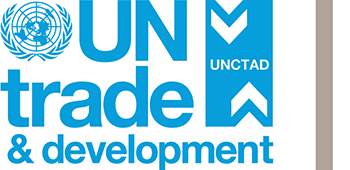Since the launch of the 2030 Agenda for Sustainable Development (2030 Agenda) in 2015, many developing countries have seen their external financial positions deteriorate, first gradually and recently at a greater speed due to compounding global shocks, including the uneven recovery from the Covid-19 pandemic, the rapidly worsening climate crisis, the armed conflict in Ukraine and the ongoing cost-of-living crisis. At the same time, and as the UNCTAD Trade and Development Report 2022 shows, rapid interest rate increases and fiscal tightening in advanced economies currently risk pushing the world towards global recession and prolonged stagnation. As of 30 September 2022, the IMF assessed 54 per cent of PRGT-eligible countries to be at high risk of or already in debt distress compared to fewer than 30 per cent in 2015, as well as around 30 per cent of emerging market economies.
In this context of mounting obstacles to the achievement of the Sustainable Development Goals (SDGs), UNCTAD has developed the Sustainable Development Finance Assessment (SDFA) Framework for policymakers of developing countries. This framework is a tool to assess a country’s development finance needs to achieve structural transformation through the most significant SDGs while at the same time ensuring the sustainability of the external and public sector financial positions. This framework incorporates sustainable development finance as a whole, considering all sources of external financing, i.e., foreign direct investment (FDI), foreign portfolio investment and external debt (both public and private). Its objective is to underline that there is a range of policy options to maintain external financial and public sector sustainability while also achieving the SDGs, with the SDFA framework allowing the assessment of these options.
In the UNCTAD SDFA framework, sustainability is a synonym for long-run solvency (Domar, 1944), where sustainability is defined as the condition that net liabilities (a stock, such as external debt) relative to some repayment capacity (a flow, such as export earnings) do not grow indefinitely in the long run. The emphasis is on the long run since the achievement of the SDGs typically requires an extended period of high public and private investment. Therefore, achieving the SDGs may cause a deterioration in both external and public sector financial positions creating potential long-run solvency problems.
This paper has three sections. The first explains why the UNCTAD SDFA framework differs from standard Debt Sustainability Analysis (DSAs). The second presents the SDFA framework. The paper ends with final remarks on the applications of this framework and the way forward.
